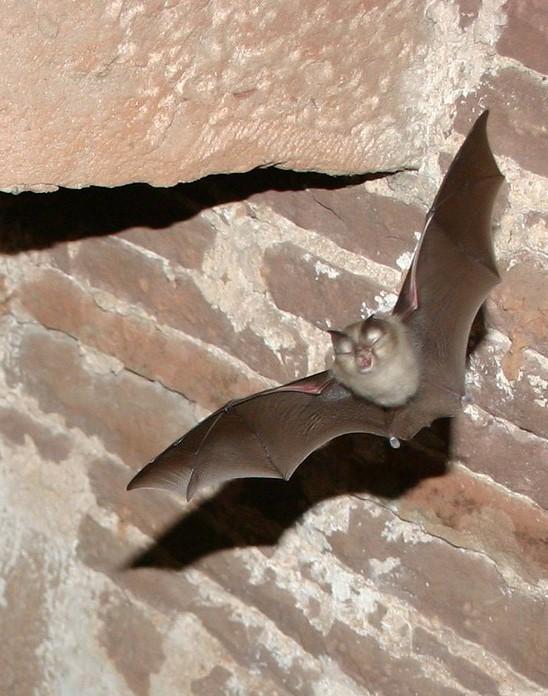In Nature Communications researchers describe finding four species of circulating coronaviruses, including two novel ones, among 16 native bat species in the United Kingdom.
Though none are currently capable of infecting humans, the viruses have similarities to those that cause COVID-19 and MERS (Middle East respiratory syndrome).
Viruses not prone to infect human cells
The surveillance was done during regular conservationist work that involved collecting 48 fecal samples. Seventeen bat species live and breed in the United Kingdom. Among the samples collected from 16 species, two species of alphacoronaviruses were detected, one MERS-CoV–related coronavirus, and one sarbecovirus. SARS-CoV-2, which causes COVID-19, is a sarbecovirus.
To see if any of the viruses could infect humans, the researchers then created "pseudoviruses," which carry whichever protein the virus uses to bind to host cells, but they cannot replicate. None of the pseudoviruses could infect human cells, they found. However, one of the sarbecoviruses found from the lesser horseshoe bat was able to bind to ACE2, the receptor that the SARS-CoV-2 virus uses to enter human cells, a press release explained.
But the virus could enter human cells only in lab conditions, and would likely need further adaptations before it's a threat to human health.
"We found a high prevalence of genetic recombination amongst sarbecoviruses, particularly in the spike gene," the authors said, "Which may facilitate viral adaptations to overcome the genetic barrier for a zoonotic jump."
Experts say findings not unexpected
Several experts weighed in on the study on the Science Media Center website, suggesting caution must be taken with these findings.
"We shouldn’t interpret this study as showing that the next pandemic will originate in the UK, or that the risk from UK bats is any higher than we thought previously," said Dan Horton, PhD, VetMB, a professor of veterinary virology at the University of Surrey. "What it does show is the value of virologists and bat ecologists working together, the need to better understand the risks, and that we have the tools and expertise available to do that."
This should not be seen as any cause for alarm; bats co-evolved with coronaviruses.
Alice Hughes, PhD, of the University of Hong Kong, said the findings are to be expected. "As we look we will find more coronaviruses in bats, especially horseshoe bats across the entire Old-World," she said. "This should not be seen as any cause for alarm; bats co-evolved with coronaviruses, and as yet we are only aware of three that have spilled into humans (SARS, MERS, and SARS-CoV2)—and all of these had an intermediate host."
Rachael Tarlinton, PhD, DVM, of the University of Nottingham, said, "It is extremely unlikely that the next coronavirus pandemic will originate in UK bats.… These coronaviruses are not particularly high risk for crossing into other species."
"The risk to public health remains very low," added Graham Smith, PhD, lead scientist for wildlife at the National Wildlife Management Centre with the Animal and Plant Health Agency.
The risk to public health remains very low.
And epidemiologist Olivier Restif, PhD, at the University of Cambridge, added, "There is no evidence that any of the viruses identified by this study could cause disease or even on outbreak in the UK. In fact, all but one virus were shown to be unable to recognise human cells in laboratory conditions, suggesting they would be innocuous."
















